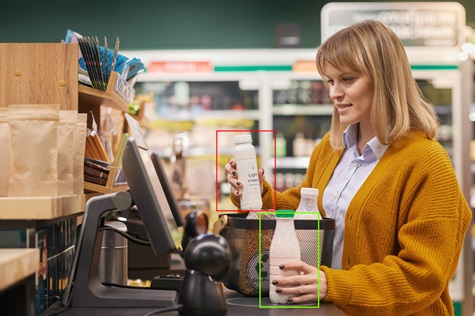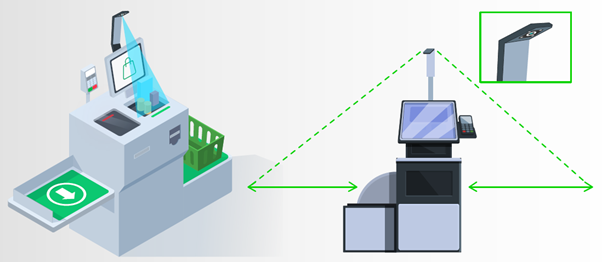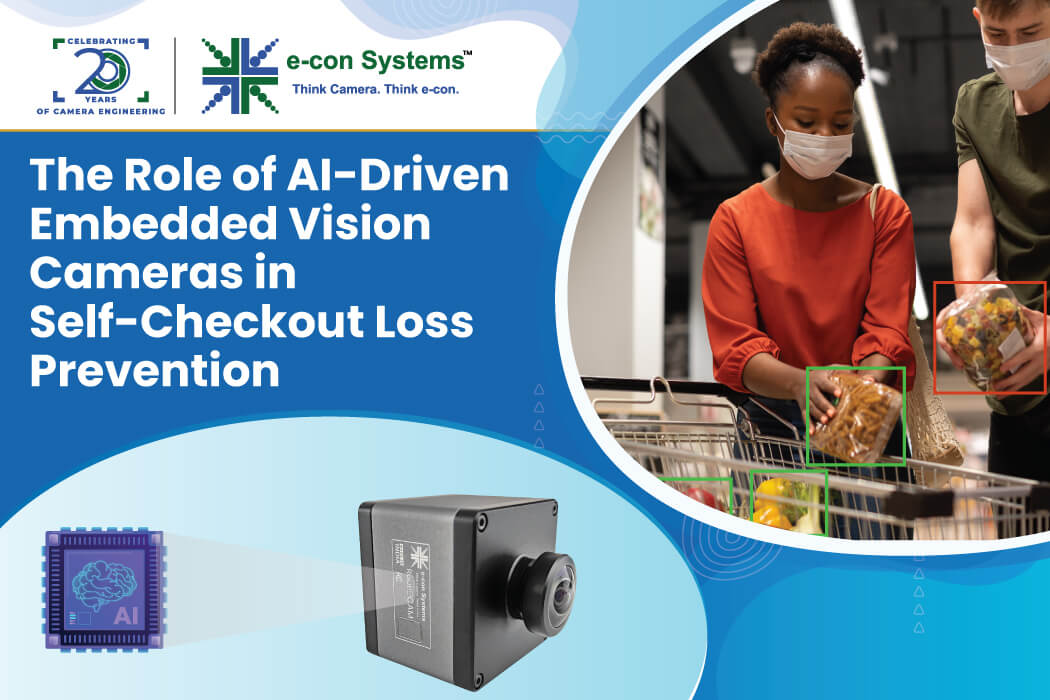Self-checkout devices have become a common feature in retail stores, offering customers the convenience of swift, independent transactions. However, this shift towards automation has brought new challenges for retailers, particularly in loss prevention. Retailers face significant issues with shrinkage, which includes theft, fraud, and errors during the checkout process.
The Growing Challenge of Retail Shrinkage
According to the National Retail Federation (NRF), the average shrink rate increased to 1.6% in FY 2022, representing $112.1 billion in losses (NRF | Homepage). Additionally, in 2023, retailers lost approximately $121.6 billion to retail theft, indicating a significant and ongoing issue. This upward trend highlights the urgent need for effective loss prevention strategies. With the rise of AI and vision-based systems, retailers can now tackle these issues more effectively, ensuring both operational efficiency and customer satisfaction.
Common Causes of Retail Loss and Shrinkage at Self-Checkouts
1. Missed Scans
Intentionally or accidentally missed scans lead to inventory and revenue discrepancies. This can cause stock-outs or overstock situations, affecting sales data analysis and leading to misguided business decisions.
2. Barcode or Ticket Switching
Shoppers swap barcodes to pay less, causing pricing errors and revenue loss. This fraudulent activity is challenging to detect and, if left unchecked, impacts profit margins.
3. Incomplete Transactions
Customers sometimes leave without completing payment or overlook items in the basket, resulting in inventory shrinkage and revenue losses.

How AI-Based Loss Prevention Systems Can Solve It
AI and machine learning have become pivotal in addressing these issues by providing real-time monitoring and advanced analytics. Here’s how AI is transforming retail loss prevention:
1. Real-Time Monitoring and Insights
AI systems offer unprecedented levels of insight into store operations. They can detect suspicious behavior and potential theft in real time, allowing for immediate action. These systems analyze patterns that human analysts might miss, providing a comprehensive view of store activities.
2. Enhanced Security Measures
AI enhances traditional security systems by integrating with smart cameras and video analytics. These technologies can recognize suspicious activity, monitor movement patterns, and interface with point-of-sale (POS) systems to prevent fraud and theft.
3. Predictive Analytics
AI can analyze past incidents of theft and other losses to identify patterns and predict future occurrences. This allows retailers to develop more effective loss prevention strategies and optimize security protocols.
4. Automated Alerts
When the system detects unusual behavior, it can automatically alert store personnel, enabling quick responses to prevent theft or fraud.

The Role of Cameras in AI-Based Loss Prevention Systems
Cameras are at the core of effective AI-based loss prevention systems. Their features play a crucial role in ensuring high accuracy and reliability. Key features include:
a. High Resolution and Dynamic Range
High-resolution cameras capture detailed images, essential for detecting small product labels and facial features. High Dynamic Range (HDR) ensures clear imaging in various lighting conditions. These features are crucial for identifying theft and ensuring accurate monitoring.
b. Customized Lens Options
Different retail environments require varied lens configurations. Wide-angle lenses provide broad coverage, while zoom lenses focus on specific areas. Custom lens options ensure comprehensive surveillance across the store, making it easier to monitor large areas and detect suspicious activities.
c. Multiple Connectivity Options
Cameras supporting interfaces such as PoE (Power over Ethernet), USB, Ethernet, and GMSL (Gigabit Multimedia Serial Link) can integrate seamlessly with existing retail infrastructure. This versatility of interfaces simplifies installation and maintenance, making the system more robust and adaptable to different environments.
d. Compact and Durable Design:
Cameras need to be compact and durable to withstand different retail environments. This ensures continuous operation and reliability, reducing downtime and maintenance costs.
e. AI and Cloud Support
Access to AI model training and cloud management services enhances the system’s capability to handle complex loss prevention tasks. Cloud support ensures that the AI algorithms are continuously updated and refined, improving their effectiveness over time. This feature also allows for remote monitoring and management, adding an extra layer of convenience and efficiency.
Conclusion
AI is revolutionizing retail loss prevention by providing real-time insights and enhancing traditional security measures. As retailers continue to invest in AI infrastructure, the potential for reducing shrinkage and improving operational efficiency becomes increasingly attainable. By leveraging advanced camera technologies in partnership with AI solutions and retail analytics providers, retailers not only protect their assets but also enhance the overall shopping experience for customers.
e-con Systems’ Camera Solutions for Retail Loss Prevention Systems
e-con Systems, with over 20 years of experience in designing, developing, and manufacturing OEM cameras, helps retail clients integrate embedded vision solutions into their loss prevention systems. We offer cameras with driver support for easy integration with any compute platform, such as NVIDIA, Qualcomm, NXP, Ambarella, x86, etc. Our smart cameras with in-built NPUs eliminate the need for external compute devices to execute AI algorithms.
Discover our SMARTOdin22_PoE_IP67-A cloud-connected smart AI camera with in-built NPU to run algorithms and optimize infrastructure and integration costs.
Explore our Platform Cameras– MIPI & GMSL Cameras for your choice of embedded platforms.
Furthermore, e-con Systems offers CloVis Central™ – a powerful cloud-based device management platform– a powerful cloud-based device management platform. It is an end-to-end solution for remote configuration and maintenance, helping users gain control over installed devices in the field.
If you need help finding and integrating the right camera solution into your loss prevention system, please write to camerasolutions@e-consystems.com.

Ranjith is a camera solution architect with over 16 years of experience in embedded product development, electronics design, and product solutioning. In e-con Systems, he has been responsible for building 100+ vision solutions for customers spanning multiple areas within retail including self service kiosks, access control systems, smart checkouts and carts, retail monitoring systems, and much more.




